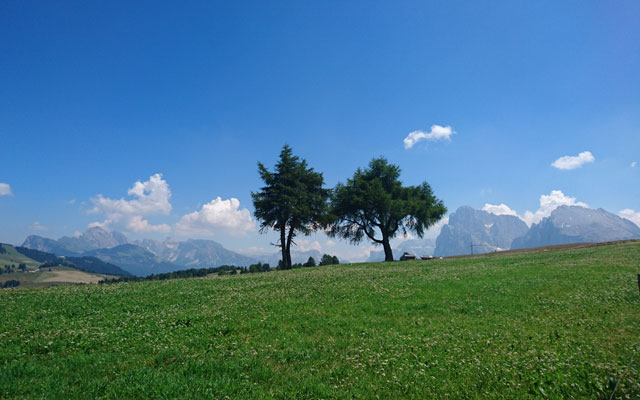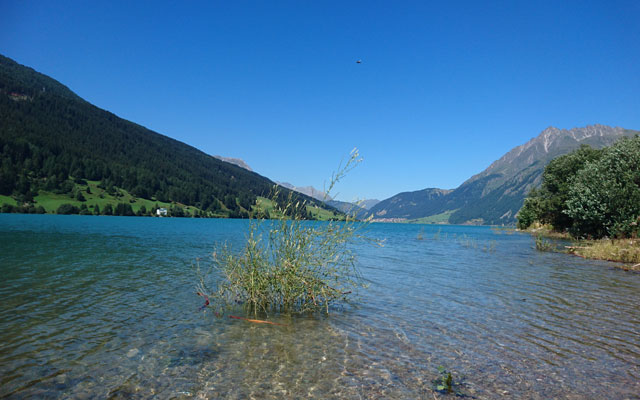© Wallpaper: HandiCaptain
GENERAL INFO
Everyday errands or exercise-intensive excursions can be quite tedious with a wheelchair from time to time. With a wheelchair traction device, on the other hand, even considerable inclines on uneven paths can be mastered with the wheelchair.
A big plus in terms of independence and freedom.
In addition to forest and wide hiking trails, a suitable traction device can also be used to master cobblestones with gradients in the city or long mountain tours.
The wheelchair towing devices are coupled in front of an existing manual wheelchair and thus increase the radius of action, among other things. Unlike handbikes, for example, the towing devices do not require manual assistance, as accelerating and steering are sufficient to get going in most cases.
Normally, no significant modifications to the wheelchair are necessary.
The coupling process can usually be carried out independently. Steering is via a moped-like steering fork or by means of a guide rail. The drive is provided by a motor. Most models have an electric motor.
Depending on the engine, there are of course differences in towing capacity for the devices. Some devices are designed for driving in the city and short trips and therefore have only a maximum "battery" runtime of 2 hours or a maximum range of 5-10 km.
Other traction devices, on the other hand, can manage mountain hikes over roots and stones in addition to asphalt paths and ramps.
The big advantage here is above all that you can enjoy the view while driving and save your energy at the same time.
Who knows where you might want to put them elsewhere instead.
Another important point is that you retain the full functionality of your manual wheelchair. Simply uncouple it and you are mobile as usual. This is a big plus, especially when shopping in the old town or when sweeping up in an alpine hut.
Accommodation, however, is again a different issue:
It makes sense to have a weatherproof and theft-proof storage place for the towing equipment. Weatherproof primarily because of the engine and other possibly weather-sensitive technology. In addition, these devices are relatively expensive and therefore a pity if someone should get the idea to steal them.
Here it is then worthwhile to look at neighboring wheelchair users in the garden houses, etc. 😉
Incidentally, wheelchair traction devices can not only be purchased, but can also be rented from some dealers or manufacturers.



Species
Here we would like to introduce the types of traction devices (known to us).
If there are any other variants, we would be very pleased about a short feedback by e-mail.
Unicycle leader
As the name suggests, the unicycle leader is an attachment for the manual wheelchair that has one wheel. This wheel is provided with a fork similar to the handbike or motorcycle. The fork can partially lead up to the handlebar with two "tubes" or already merge into one bar shortly behind the wheel. A speed regulator and often the battery indicator are attached to the handlebars. Extensions such as lamps, GPS devices etc. are also possible. The front wheel is offered in different sizes, maximum 20 inches for off-road variants. The battery is usually attached to the fork and thus weighs down the unicycle leader by a few kg. This increases the grip of the wheel and it grinds less on inclines due to the weight distribution. In addition to the basic equipment, mudguards, shock absorbers or luggage racks can also be added.
The attachment options to your own wheelchair are different. In part, an adapter is necessary, but in part the traction device can also be attached to the right and left of the frame.
Four-wheel leader
While these devices are indeed a four-wheeled traction device, only the rear two wheels are used. The front wheels are mainly used to overcome curbs more easily. Above the wheels is the area for the batteries, which in this case are usually car batteries and thus are mounted directly above the wheels due to their girth and weight. The weight is also important to improve the grip of the wheels and thus prevent them from spinning on inclines. On top of the wrapped car batteries, there is usually a parking space, sometimes with a luggage rack. The steering rod is mounted at the rear between the wheels and can be turned by loosening a lever and placed on the battery box. On the handlebar are the speed control and the battery indicator. The device is charged via a cable with connection directly to the battery.
In order to attach the traction device to the wheelchair, an adapter for the coupling is required, which is attached to the frame of the wheelchair underneath the seat.



